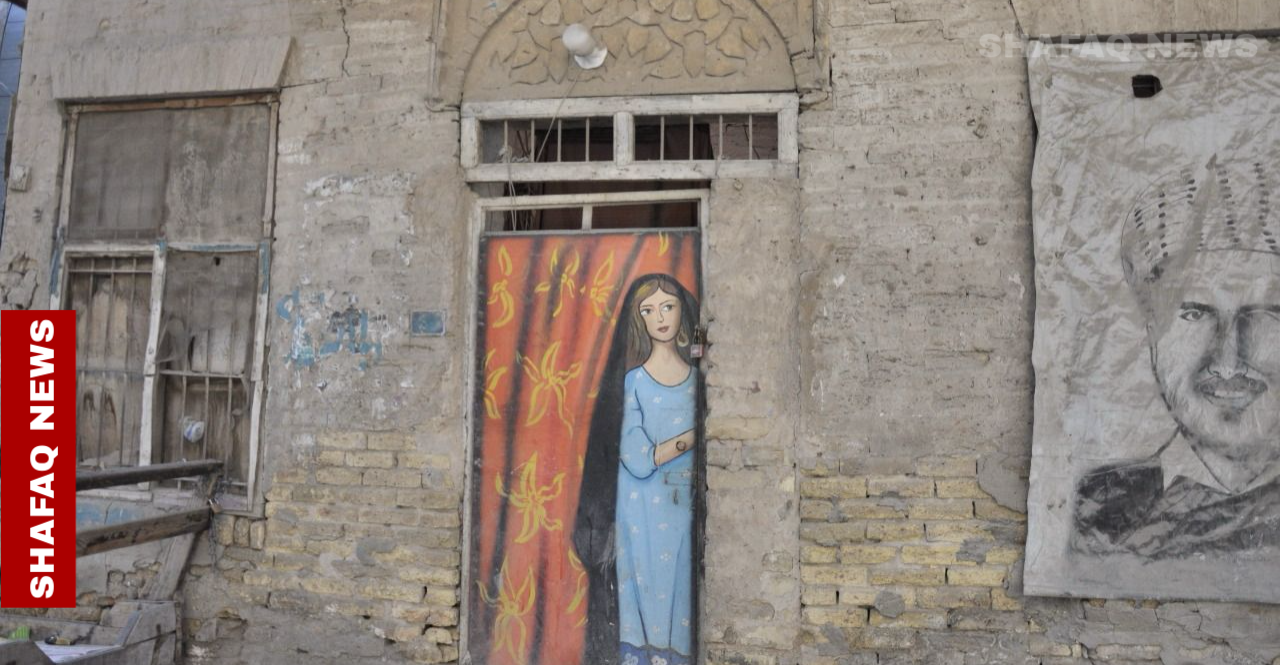Shafaq News/ Mahallet Al-Shuyoukh,one of Baghdad’s oldest neighborhoods, is deteriorating rapidly amid legalambiguities, state neglect, and infrastructural decay. Once a vibrant hub ofreligious coexistence and economic innovation, the area now teeters on thebrink of cultural erasure.
Located between the Imam Al-AzamMosque and Shatt Al-Basha in the al-Adhamiyah district, the neighborhood haslong stood as a symbol of Baghdad’s pluralistic identity. Stretching across thecity’s eastern side, Mahallet Al-Shuyoukh has historically been known for itsrich religious, social, and commercial life.
A Name in Dispute: A LegacyUnquestioned
The origins of the name remaindebated. Some historians trace it to revered Sufi sheikhs such as Sheikh JalalAl-Din and the poet Muhammad ibn Ahmed Al-Hanafi Al-Kufi, while others link itto tribal elders of the Al-Obeid clan, who arrived in 1638 with Ottoman SultanMurad IV’s military campaign. According to researcher Ali Ward, the area wasofficially recognized as a district in 1870 during the Ottoman reforms ofMidhat Pasha.
“Two Baghdad neighborhoods share thesame name,” Ward told Shafaq News. “One in al-Kadhimiya, linked to the Tayytribe; and one here, associated with the Al-Obeid sheikhs.”
Layers of Culture and Coexistence
Mahallet Al-Shuyoukh once embodiedthe city’s diversity, where Muslims, Jews, and Sufi communities lived side byside. Remnants of this coexistence still dot the landscape—dilapidatedsynagogues and Sufi lodges standing alongside mosques and Islamic schools.
“The neighborhood served as aminiature Baghdad,” said heritage researcher Fahd Al-Adhami, noting the role ofearly 20th-century cafés in fostering communal life. Beit Al-Afandi Café,Hijazi Café, and the still-remembered Mohammed Ghaib Café (opened in 1934) weremore than social spaces—they were venues for mediation, storytelling, andmutual aid.
Economically, the area thrived. Ithoused Baghdad’s first grain mill, a 1928 soap factory that employed Germanworkers, and small-scale industries like wool processing and leather tanning.Markets traded in farm produce, textiles, and timber, fueled by nearbyorchards.
Crumbling Structures, FrozenOwnership
Today, the neighborhood'sarchitectural heritage is in steep decline. Traditional woodenshanasheel—Baghdadi overhanging balconies—are collapsing under the weight oftime, moisture, and neglect.
“These houses are notgovernment-owned, and most legal heirs are either abroad or unable to financerepairs,” Mouayyad Al-Saleh, 60, a longtime resident, told Shafaq News Agency.“Some tenants have lived here for decades but can’t renovate because they don’thold ownership rights.”
While the Sunni Endowment Office hasundertaken preservation efforts in other parts of al-Adhamiyah, no similarinitiative has emerged for Mahallet Al-Shuyoukh. Residents feel abandoned.
“These buildings may be privatelyowned,” said Farouq Al-Obaidi, 47, “but they’re part of Iraq’s collectivememory.”
Infrastructure Woes, InstitutionalSilence
The neighborhood's troubles aredeepened by rising underground water—Nazeeza—which undermines buildingfoundations and hastens decay. Longtime residents say the issue has beenignored by municipal authorities for years.
Community leaders and heritageadvocates have repeatedly called for a comprehensive preservation strategy.They argue that the legal and financial frameworks used in places likeal-Kadhimiya could be extended here with political will and institutional coordination.
A Vanishing Archive
The unraveling of MahalletAl-Shuyoukh mirrors a broader crisis in Iraq’s approach to heritagepreservation. Decades of conflict, displacement, and bureaucratic fragmentationhave left many historical neighborhoods exposed and unprotected.
Even the neighborhood’s narrowalleys—once named for local figures like Issa Al-A’ma and Hassoun Al-Sukran—areslipping from memory. Without urgent intervention, Mahallet Al-Shuyoukh risksbeing lost not just as a place, but as a living chapter of Baghdad’s inclusiveand resilient past.

